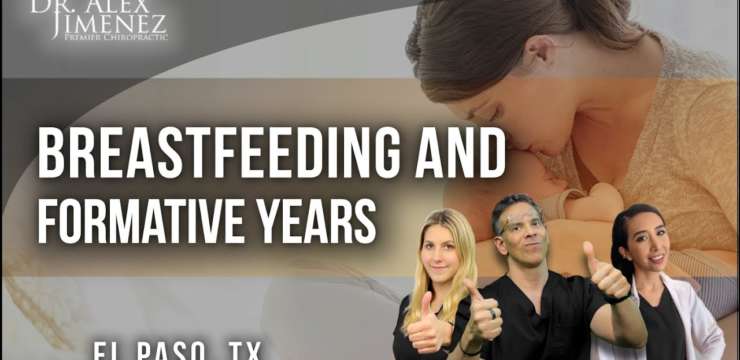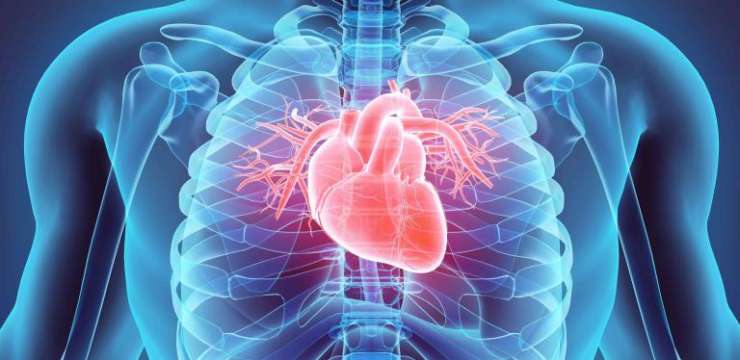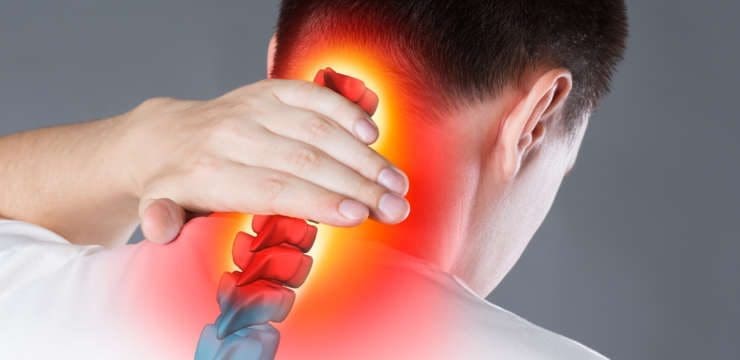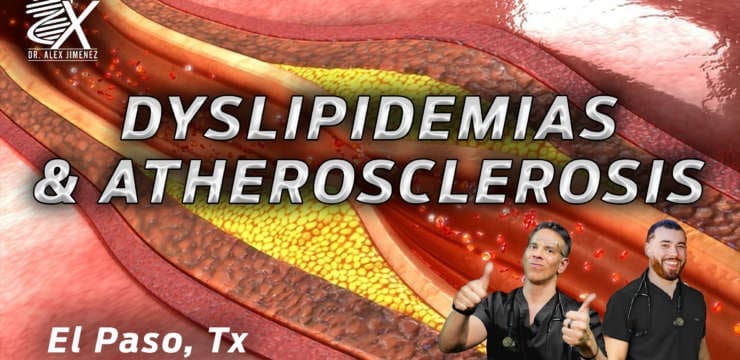
Chiropractic care for cervical lordosis can help restore balance and alleviate discomfort in your neck and upper back.
Table of Contents
Understanding Cervical Lordosis, Whiplash, and Chiropractic Care: A Comprehensive Guide for El Paso Residents
Neck pain can be a real pain in the… well, neck! Whether it’s from a fender-bender that leaves you feeling like you’ve been on a rollercoaster gone wrong, slouching over your phone like it’s the most fascinating thing since sliced bread, or just the daily grind wearing you down, neck pain is no laughing matter—though we’ll sprinkle in a bit of humor to keep things light. In El Paso, TX, Dr. Alexander Jimenez, a chiropractor and functional medicine expert, is like a neck-pain-fighting superhero, helping people get back to their best selves. This blog post dives deep into cervical lordosis, its disruption by whiplash from auto injuries, and why chiropractic care—paired with other non-surgical treatments—can be a game-changer. We’ll explore environmental factors causing neck pain, share practical tips from Dr. Jimenez’s expertise, and highlight his role in personal injury cases in El Paso. So, grab a comfy seat (with good posture, please!) and let’s get started on this 5,000+ word journey to a healthier neck.
What Is Cervical Lordosis?
Let’s kick things off with the star of the show: cervical lordosis. This is the natural, inward curve of the cervical spine (the top seven vertebrae, C1–C7) in your neck. Think of it as a gentle “C” shape that keeps your neck strong, flexible, and ready to support your head, which, fun fact, weighs about 10–12 pounds, roughly the same as a bowling ball! This curve is like the suspension system in a car, absorbing shocks and distributing weight to keep everything running smoothly.
When this curve is disrupted, you get loss of cervical lordosis, where the neck flattens or, in some cases, reverses into a kyphotic (outward) curve. It’s like if your car’s suspension went flat—suddenly, every bump feels like a crater. This condition can be triggered by trauma like whiplash, poor posture, or other environmental factors, and it comes with a host of symptoms that can make your day feel like a neck-wrestling match.
Symptoms of Loss of Cervical Lordosis
When your cervical curve decides to take a vacation, you might notice:
- Neck pain or stiffness: Your neck feels like it’s auditioning for the role of “rusty gate.”
- Headaches: Often cervicogenic (neck-related), these can range from a dull ache to “I need a dark room and silence” intensity (Biondi, 2001).
- Limited range of motion: Turning your head feels like trying to rotate a jammed steering wheel.
- Muscle spasms: Your neck muscles tighten up, as if they’re preparing for a cage match.
- Numbness or tingling: This can radiate into your shoulders or arms if nerves are compressed.
- Fatigue: Carrying that bowling-ball head without proper support is exhausting!
- Postural changes: You might start resembling a question mark if you’re not careful.
If left untreated, loss of cervical lordosis can lead to chronic issues like degenerative disc disease or herniated discs, making it crucial to address early (Gore et al., 1986). Luckily, chiropractic care, especially from pros like Dr. Jimenez, can help restore that curve and get your neck back in fighting shape.
References:
- Biondi, D. M. (2001). Cervicogenic Headache: A Review of Diagnostic and Treatment Strategies. Journal of the American Osteopathic Association, 101(4 Suppl), S16–S22. pubmed.ncbi.nlm.nih.gov/11392209/
- Gore, D. R., Sepic, S. B., & Gardner, G. M. (1986). Roentgenographic findings of the cervical spine in asymptomatic people. Spine, 11(6), 521–524. pubmed.ncbi.nlm.nih.gov/3764330/
Whiplash: The Neck’s Unwanted Rollercoaster Ride
Whiplash is what happens when your neck gets whipped back and forth faster than you can say “traffic jam on I-10.” It’s most commonly caused by auto accidents, where a sudden force (like a rear-end collision) overstretches the neck’s muscles, ligaments, and joints. This trauma can throw your cervical lordosis out of whack, leading to pain, stiffness, and a whole lot of “ouch.”
How Whiplash Disrupts Cervical Lordosis
Picture this: you’re cruising along, singing to your favorite tune, when—BAM!—someone rear-ends you. The sudden jolt can:
- Overstretch soft tissues: Muscles and ligaments get stretched like a rubber band, causing inflammation and spasms.
- Misalign vertebrae: The cervical spine can shift, flattening or reversing the natural curve.
- Compress nerves: This leads to radiating pain, numbness, or tingling in your arms or shoulders.
- Trigger compensatory changes: Your body might try to “protect” the injured area by altering your posture, which can worsen the loss of curve over time.
Dr. Alexander Jimenez notes that whiplash doesn’t just cause immediate pain—it can set off a domino effect of biomechanical issues that affect the entire spine (Jimenez, 2025). A flattened cervical curve increases stress on discs and facet joints, potentially leading to chronic pain or degeneration if not addressed.
Why Chiropractic Care Works for Whiplash-Related Cervical Lordosis Loss
Chiropractic care is like the neck’s personal mechanic, fixing alignment issues and getting everything back in gear. Here’s the clinical rationale for why it’s so effective, backed by Dr. Jimenez’s insights and research:
- Restores Alignment: Chiropractic adjustments gently realign the cervical vertebrae, helping to restore the natural lordotic curve and reduce stress on the spine (Jimenez, 2025).
- Reduces Inflammation: Techniques like spinal manipulation and soft tissue therapy decrease inflammation, easing pain and stiffness (Gross et al., 2016).
- Improves Mobility: Adjustments and mobilization techniques loosen tight joints and muscles, making it easier to turn your head without grimacing (Hurwitz et al., 2008).
- Relieves Nerve Compression: Correcting misalignments takes pressure off nerves, reducing symptoms like tingling or numbness.
- Promotes Natural Healing: Unlike painkillers that just mask symptoms, chiropractic care targets the root cause, allowing your body to heal itself (Jimenez, 2025).
Dr. Jimenez stresses that timing is everything. The sooner you address whiplash-related changes to cervical lordosis, the better your chances of avoiding chronic issues. His approach at Southwest Functional Medicine combines chiropractic care with functional medicine principles, such as nutritional support and lifestyle adjustments, for a holistic recovery plan.
References:
- Jimenez, A. (2025). Whiplash chiropractor: Loss of cervical lordosis. Dr. Alex Jimenez. dralexjimenez.com/whiplash-chiropractor-loss-of-cervical-lordosis/
- Gross, A. R., Kaplan, F., Huang, S., Khan, M., Santaguida, P. L., Carlesso, L. C., … & Taylor-Vaisey, A. (2016). Psychological care, patient education, orthotics, ergonomics, and exercise for chronic neck pain: A systematic review. European Spine Journal, 25(10), 3111–3124. pubmed.ncbi.nlm.nih.gov/28250631/
- Hurwitz, E. L., Carragee, E. J., van der Velde, G., Carroll, L. J., Nordin, M., Guzman, J., … & Haldeman, S. (2008). Treatment of Neck Pain: Noninvasive Interventions. Spine, 33(4 Suppl), S123–S152. pubmed.ncbi.nlm.nih.gov/18204386/
Environmental Factors Fueling Neck Pain
Neck pain isn’t just about car accidents—it’s often a team effort by environmental factors that gang up on your cervical spine like a pack of pesky gremlins. Let’s explore the culprits and how they contribute to neck pain and loss of cervical lordosis, with some practical fixes inspired by Dr. Jimenez.
1. Poor Posture (The “Tech Neck” Culprit)
Thanks to smartphones, laptops, and binge-watching your favorite shows, many of us spend hours with our heads tilted forward like we’re inspecting a treasure map. This “tech neck” posture strains the cervical spine, flattening the lordotic curve over time. Research shows that prolonged forward head posture is a major risk factor for neck pain and musculoskeletal issues (Mahmoud et al., 2019).
Fix It: Dr. Jimenez suggests holding your phone at eye level, using ergonomic chairs, and taking “posture breaks” every 30 minutes to stretch and reset your spine (Health Coach Clinic, 2025). Pro tip: Pretend you’re balancing a book on your head—it’s like a mini-workout for your posture!
2. Workplace Ergonomics
If your desk setup resembles one designed by someone who hates necks, you’re in trouble. Improper monitor height, unsupportive chairs, or awkward keyboard positions can strain your cervical spine. Studies confirm that poor workplace ergonomics is a leading cause of neck pain in office workers (Cagnie et al., 2007).
Fix It: Adjust your monitor to eye level, use a chair with lumbar support, and keep your keyboard close to avoid hunching. Dr. Jimenez’s health coaching includes ergonomic assessments to optimize your workspace (Health Coach Clinic, 2025).
3. Stress and Muscle Tension
Stress is like that annoying friend who tightens every muscle in your neck just for kicks. Chronic stress causes muscle tension, which can pull on the cervical spine and disrupt its natural curve. This is especially true for those juggling high-pressure jobs or personal challenges (Gross et al., 2016).
Fix It: Dr. Jimenez recommends stress-busting techniques like mindfulness, deep breathing, or yoga. His functional medicine approach also includes nutritional support to reduce stress-related inflammation (Health Coach Clinic, 2025). Try a quick breathing exercise: inhale for 4 seconds, hold for 4 seconds, exhale for 4 seconds—repeat until you feel less like a stressed-out pretzel.
4. Environmental Toxins
Exposure to pollutants or chemicals can indirectly worsen neck pain by causing systemic inflammation, which exacerbates musculoskeletal issues. While not a direct cause, inflammation can make existing neck problems feel like a bigger deal (Jimenez, 2025).
Fix It: Dr. Jimenez’s functional medicine protocols include detox programs and nutraceuticals to reduce inflammation and support overall health (Health Coach Clinic, 2025). Think of it as giving your body a spring cleaning!
5. Sedentary Lifestyle
Sitting all day is like telling your spine, “Take a break, but not the fun kind.” A lack of movement weakens the muscles supporting the cervical spine, increasing the risk of pain and loss of lordosis (Hurwitz et al., 2008).
Fix It: Incorporate 10–15 minutes of daily movement—think short walks, stretching, or light strength exercises. Dr. Jimenez’s health coaching offers personalized exercise plans to keep your spine happy (Health Coach Clinic, 2025). Bonus: A quick walk around the block can also clear your head!
References:
- Mahmoud, N. F., Hassan, K. A., Abdelmajeed, S. F., Moustafa, I. M., & Silva, A. G. (2019). The Relationship Between Forward Head Posture and Neck Pain: A Systematic Review and Meta-Analysis. Current Reviews in Musculoskeletal Medicine, 12(4), 562–577. pubmed.ncbi.nlm.nih.gov/31773490/
- Cagnie, B., Danneels, L., Van Tiggelen, D., De Loose, V., & Cambier, D. (2007). Individual and work-related risk factors for neck pain among office workers: A cross-sectional study. European Spine Journal, 16(5), 679–686. pubmed.ncbi.nlm.nih.gov/17160393/
- Gross, A. R., et al. (2016). Psychological care, patient education, orthotics, ergonomics, and exercise for chronic neck pain: A systematic review. European Spine Journal, 25(10), 3111–3124. pubmed.ncbi.nlm.nih.gov/28250631/
- Hurwitz, E. L., et al. (2008). Treatment of Neck Pain: Noninvasive Interventions. Spine, 33(4 Suppl), S123–S152. pubmed.ncbi.nlm.nih.gov/18204386/
- Jimenez, A. (2025). Whiplash chiropractor: Loss of cervical lordosis. Dr. Alex Jimenez. dralexjimenez.com/whiplash-chiropractor-loss-of-cervical-lordosis/
- Health Coach Clinic. (2025). El Paso, TX Health Coach Clinic – Functional Medicine and Wellness. healthcoach.clinic/
The Cervical Spine: Your Neck’s MVP
The cervical spine is often likened to the unsung hero of the body’s infrastructure. It’s not just a stack of bones—it supports your head, protects your spinal cord, and keeps the communication lines open between your brain and the rest of your body. When it’s out of alignment, it’s like trying to send a text with one bar of signal—things get messy fast.
Key Roles of the Cervical Spine
- Structural Support: Holds up your 10–12-pound head and maintains posture, so you don’t look like you’re auditioning for a slouchy sitcom role.
- Mobility: Allows you to nod, turn, and tilt your head—essential for checking your blind spots or giving a dramatic hair flip.
- Nerve Protection: Houses the spinal cord and nerve roots, which control sensations and movements in your upper body.
- Shock Absorption: The lordotic curve absorbs impact from daily activities, preventing wear and tear on your spine.
When the cervical spine loses its natural curve due to whiplash or other factors, it can disrupt these functions, leading to pain, reduced mobility, and even systemic issues like headaches or fatigue (Biondi, 2001).
How Chiropractic Care and Non-Surgical Treatments Help
Dr. Jimenez’s approach at Southwest Functional Medicine is like a Swiss Army knife for neck pain—versatile, precise, and effective. Here’s how chiropractic care, combined with other non-surgical treatments, tackles cervical spine issues:
- Chiropractic adjustments involve gentle manipulations that realign the cervical vertebrae, restoring the lordotic curve and reducing nerve compression (Jimenez, 2025).
- Soft Tissue Therapy: Techniques like massage or myofascial release relieve muscle tension and improve blood flow, loosening up those cranky neck muscles.
- Nutritional Support: Dr. Jimenez uses nutraceuticals and dietary changes to reduce inflammation and support tissue repair (Health Coach Clinic, 2025).
- Exercise and Rehabilitation: Customized exercises strengthen neck muscles and improve posture, preventing further injury (Gross et al., 2016).
- Health Coaching: Dr. Jimenez’s 24/7 health coaching helps patients implement lifestyle changes, like ergonomic adjustments or stress management, to support long-term recovery (Health Coach Clinic, 2025).
These treatments work together to address overlapping risk factors for neck pain, such as inflammation, poor posture, and muscle imbalances, creating a comprehensive plan for healing.
References:
- Biondi, D. M. (2001). Cervicogenic Headache: A Review of Diagnostic and Treatment Strategies. Journal of the American Osteopathic Association, 101(4 Suppl), S16–S22. pubmed.ncbi.nlm.nih.gov/11392209/
- Jimenez, A. (2025). Whiplash chiropractor: Loss of cervical lordosis. Dr. Alex Jimenez. dralexjimenez.com/whiplash-chiropractor-loss-of-cervical-lordosis/
- Gross, A. R., et al. (2016). Psychological care, patient education, orthotics, ergonomics, and exercise for chronic neck pain: A systematic review. European Spine Journal, 25(10), 3111–3124. pubmed.ncbi.nlm.nih.gov/28250631/
- Health Coach Clinic. (2025). El Paso, TX Health Coach Clinic – Functional Medicine and Wellness. healthcoach.clinic/
Chiropractic Care for Neck Pain Relief- Video
Dr. Alexander Jimenez: El Paso’s Go-To for Personal Injury Cases
In El Paso, personal injury cases—especially those involving auto accidents—are as common as tacos on a Tuesday. Whether it’s a rear-end collision on a busy highway or a side-swipe while fighting for that last parking spot, these incidents can leave victims with whiplash, neck pain, and loss of cervical lordosis. Enter Dr. Alexander Jimenez, El Paso’s chiropractic and functional medicine rockstar, who’s helping personal injury victims get back on their feet.
How Dr. Jimenez Supports Personal Injury Victims
- Advanced Imaging and Diagnostics: Dr. Jimenez uses cutting-edge imaging (like X-rays or MRIs) and detailed lab work to assess cervical spine damage, pinpointing the exact cause of pain and loss of lordosis (Jimenez, 2025).
- Dual-Scope Expertise: His skills in chiropractic care and functional medicine allow him to create comprehensive treatment plans that address both structural and systemic issues.
- Legal Liaison: Dr. Jimenez bridges the gap between medical and legal teams, providing detailed reports that link injuries to the accident. This is critical for insurance claims or lawsuits, ensuring victims get fair compensation.
- Personalized Care: Every patient receives a tailored plan that combines chiropractic adjustments, nutritional support, and health coaching to promote healing and prevent chronic issues (Health Coach Clinic, 2025).
Dr. Jimenez’s practice, Southwest Functional Medicine, is a beacon of hope for El Pasoans dealing with auto injuries. His ability to combine clinical expertise with compassionate care makes him a trusted ally for personal injury victims.
References:
- Jimenez, A. (2025). Whiplash chiropractor: Loss of cervical lordosis. Dr. Alex Jimenez. dralexjimenez.com/whiplash-chiropractor-loss-of-cervical-lordosis/
- Health Coach Clinic. (2025). El Paso, TX Health Coach Clinic – Functional Medicine and Wellness. healthcoach.clinic/
- Jimenez, A. (n.d.). LinkedIn profile. www.linkedin.com/in/dralexjimenez/
Small Changes, Big Impact: Clinical Insights from Dr. Jimenez
You don’t need to turn your life upside down to improve your neck health—sometimes, small tweaks are like adding hot sauce to a bland dish: a little goes a long way. Here are some practical tips from Dr. Jimenez’s health coaching playbook:
- Posture Checks: Set a timer every 30 minutes to check your posture. Sit up straight, shoulders back, and imagine you’re a runway model strutting your stuff (Health Coach Clinic, 2025).
- Neck Stretches: Try gentle chin tucks or side-to-side head tilts during TV commercial breaks. It’s like a mini-vacation for your neck.
- Hydration and Nutrition: Drink plenty of water and eat anti-inflammatory foods like berries, nuts, and leafy greens to support tissue repair (Health Coach Clinic, 2025). Your neck will thank you for the TLC.
- Sleep Smart: Use a supportive pillow to maintain your cervical curve while you sleep. No more waking up feeling like you slept on a pile of bricks!
- Move It: Incorporate 10–15 minutes of daily movement, like walking or yoga, to keep your spine flexible and strong. Bonus points: It’s a great excuse to enjoy El Paso’s sunny weather.
These small changes, combined with chiropractic care and functional medicine, can help you reclaim your neck health and prevent future issues.
References:
- Health Coach Clinic. (2025). El Paso, TX Health Coach Clinic – Functional Medicine and Wellness. healthcoach.clinic/
Additional Considerations: Neck Pain and Chronic Conditions
Neck pain isn’t always a one-and-done issue—it can be linked to chronic conditions like migraines, autoimmune disorders, or even diabetes, which can complicate recovery. For example, research shows that cervical musculoskeletal impairments can increase pain sensitivity in migraine patients, making neck pain feel even worse (Luedtke et al., 2018). Similarly, chronic neck pain often requires non-pharmacological treatments, such as chiropractic care, exercise, and stress management, to achieve lasting relief (Gross et al., 2016).
Dr. Jimenez’s functional medicine approach is particularly effective here. By addressing underlying factors like inflammation or nutritional deficiencies, he helps patients manage chronic conditions alongside neck pain. His use of detailed lab work and diagnostic testing ensures that no stone is left unturned, providing a comprehensive picture of each patient’s health (Health Coach Clinic, 2025).
References:
- Luedtke, K., Starke, W., & May, A. (2018). Cervical musculoskeletal impairments and pain sensitivity in migraine patients. Cephalalgia, 38(5), 971–978. pubmed.ncbi.nlm.nih.gov/28758416/
- Gross, A. R., et al. (2016). Psychological care, patient education, orthotics, ergonomics, and exercise for chronic neck pain: A systematic review. European Spine Journal, 25(10), 3111–3124. pubmed.ncbi.nlm.nih.gov/28250631/
- Health Coach Clinic. (2025). El Paso, TX Health Coach Clinic – Functional Medicine and Wellness. healthcoach.clinic/
Why El Paso Chooses Dr. Jimenez
El Paso is a vibrant city, but it’s no stranger to auto accidents and personal injuries. With busy roads and bustling intersections, whiplash and neck pain are common complaints. Dr. Jimenez stands out as a trusted practitioner because of his:
- Holistic Approach: Combining chiropractic care, functional medicine, and health coaching for comprehensive care.
- Community Focus: As an El Paso native, he understands the local community’s needs and is dedicated to improving their health.
- Proven Results: Patient testimonials highlight improved energy, mobility, and quality of life after treatment (Health Coach Clinic, 2025).
- Accessibility: With 24/7 health coaching support and a clinic designed to meet patients’ needs, Dr. Jimenez is always there when you need him.
Whether you’re a busy professional, a parent juggling a million tasks, or someone recovering from an auto accident, Dr. Jimenez’s personalized care can make all the difference.
References:
- Health Coach Clinic. (2025). El Paso, TX Health Coach Clinic – Functional Medicine and Wellness. healthcoach.clinic/
Conclusion
Neck pain, whiplash, and loss of cervical lordosis are serious conditions that can disrupt your daily life, but they don’t have to be permanent. Through chiropractic care, functional medicine, and small lifestyle changes, Dr. Alexander Jimenez and his team at Southwest Functional Medicine in El Paso, TX, offer a path to recovery that’s both effective and personalized. By addressing the root causes of neck pain—whether from auto accidents, poor posture, or environmental factors—Dr. Jimenez helps patients restore their cervical spines’ natural curve and reclaim their health. His expertise in personal injury cases, advanced diagnostics, and dual-scope procedures makes him a trusted ally for El Pasoans seeking relief and justice after an injury.
Disclaimer: This blog post is for informational purposes only and should not be considered medical advice. Always consult a qualified healthcare provider, such as Dr. Alexander Jimenez, for a thorough evaluation and personalized treatment plan tailored to your specific needs. The information provided is based on clinical insights and research, but is not a substitute for professional medical guidance.
References:
- Biondi, D. M. (2001). Cervicogenic Headache: A Review of Diagnostic and Treatment Strategies. Journal of the American Osteopathic Association, 101(4 Suppl), S16–S22. pubmed.ncbi.nlm.nih.gov/11392209/
- Gore, D. R., Sepic, S. B., & Gardner, G. M. (1986). Roentgenographic findings of the cervical spine in asymptomatic people. Spine, 11(6), 521–524. pubmed.ncbi.nlm.nih.gov/3764330/
- Jimenez, A. (2025). Whiplash chiropractor: Loss of cervical lordosis. Dr. Alex Jimenez. dralexjimenez.com/whiplash-chiropractor-loss-of-cervical-lordosis/
- Gross, A. R., Kaplan, F., Huang, S., Khan, M., Santaguida, P. L., Carlesso, L. C., … & Taylor-Vaisey, A. (2016). Psychological care, patient education, orthotics, ergonomics, and exercise for chronic neck pain: A systematic review. European Spine Journal, 25(10), 3111–3124. pubmed.ncbi.nlm.nih.gov/28250631/
- Hurwitz, E. L., Carragee, E. J., van der Velde, G., Carroll, L. J., Nordin, M., Guzman, J., … & Haldeman, S. (2008). Treatment of Neck Pain: Noninvasive Interventions. Spine, 33(4 Suppl), S123–S152. pubmed.ncbi.nlm.nih.gov/18204386/
- Mahmoud, N. F., Hassan, K. A., Abdelmajeed, S. F., Moustafa, I. M., & Silva, A. G. (2019). The Relationship Between Forward Head Posture and Neck Pain: A Systematic Review and Meta-Analysis. Current Reviews in Musculoskeletal Medicine, 12(4), 562–577. pubmed.ncbi.nlm.nih.gov/31773490/
- Cagnie, B., Danneels, L., Van Tiggelen, D., De Loose, V., & Cambier, D. (2007). Individual and work-related risk factors for neck pain among office workers: A cross-sectional study. European Spine Journal, 16(5), 679–686. pubmed.ncbi.nlm.nih.gov/17160393/
- Luedtke, K., Starke, W., & May, A. (2018). Cervical musculoskeletal impairments and pain sensitivity in migraine patients. Cephalalgia, 38(5), 971–978. pubmed.ncbi.nlm.nih.gov/28758416/
- Health Coach Clinic. (2025). El Paso, TX Health Coach Clinic – Functional Medicine and Wellness. healthcoach.clinic/
- Jimenez, A. (n.d.). LinkedIn profile. www.linkedin.com/in/dralexjimenez/
Disclaimers
Professional Scope of Practice *
The information herein on "Chiropractic Care: A Complete Guide on Cervical Lordosis" is not intended to replace a one-on-one relationship with a qualified health care professional or licensed physician and is not medical advice. We encourage you to make healthcare decisions based on your research and partnership with a qualified healthcare professional.
Blog Information & Scope Discussions
Welcome to El Paso's wellness blog, where Dr. Alex Jimenez, DC, FNP-C, a board-certified Family Practice Nurse Practitioner (FNP-C) and Chiropractor (DC), presents insights on how our team is dedicated to holistic healing and personalized care. Our practice aligns with evidence-based treatment protocols inspired by integrative medicine principles, similar to those found on dralexjimenez.com, focusing on restoring health naturally for patients of all ages.
Our areas of chiropractic practice include Wellness & Nutrition, Chronic Pain, Personal Injury, Auto Accident Care, Work Injuries, Back Injury, Low Back Pain, Neck Pain, Migraine Headaches, Sports Injuries, Severe Sciatica, Scoliosis, Complex Herniated Discs, Fibromyalgia, Chronic Pain, Complex Injuries, Stress Management, Functional Medicine Treatments, and in-scope care protocols.
Our information scope is limited to chiropractic, musculoskeletal, physical medicine, wellness, contributing etiological viscerosomatic disturbances within clinical presentations, associated somato-visceral reflex clinical dynamics, subluxation complexes, sensitive health issues, and functional medicine articles, topics, and discussions.
We provide and present clinical collaboration with specialists from various disciplines. Each specialist is governed by their professional scope of practice and their jurisdiction of licensure. We use functional health & wellness protocols to treat and support care for the injuries or disorders of the musculoskeletal system.
Our videos, posts, topics, subjects, and insights cover clinical matters, issues, and topics that relate to and directly or indirectly support our clinical scope of practice.*
Our office has reasonably attempted to provide supportive citations and has identified the relevant research studies or studies supporting our posts. We provide copies of supporting research studies available to regulatory boards and the public upon request.
We understand that we cover matters that require an additional explanation of how they may assist in a particular care plan or treatment protocol; therefore, to discuss the subject matter above further, please feel free to ask Dr. Alex Jimenez, DC, APRN, FNP-BC, or contact us at 915-850-0900.
We are here to help you and your family.
Blessings
Dr. Alex Jimenez DC, MSACP, APRN, FNP-BC*, CCST, IFMCP, CFMP, ATN
email: coach@elpasofunctionalmedicine.com
Licensed as a Doctor of Chiropractic (DC) in Texas & New Mexico*
Texas DC License # TX5807
New Mexico DC License # NM-DC2182
Licensed as a Registered Nurse (RN*) in Texas & Multistate
Texas RN License # 1191402
ANCC FNP-BC: Board Certified Nurse Practitioner*
Compact Status: Multi-State License: Authorized to Practice in 40 States*
Graduate with Honors: ICHS: MSN-FNP (Family Nurse Practitioner Program)
Degree Granted. Master's in Family Practice MSN Diploma (Cum Laude)
Dr. Alex Jimenez, DC, APRN, FNP-BC*, CFMP, IFMCP, ATN, CCST
My Digital Business Card






